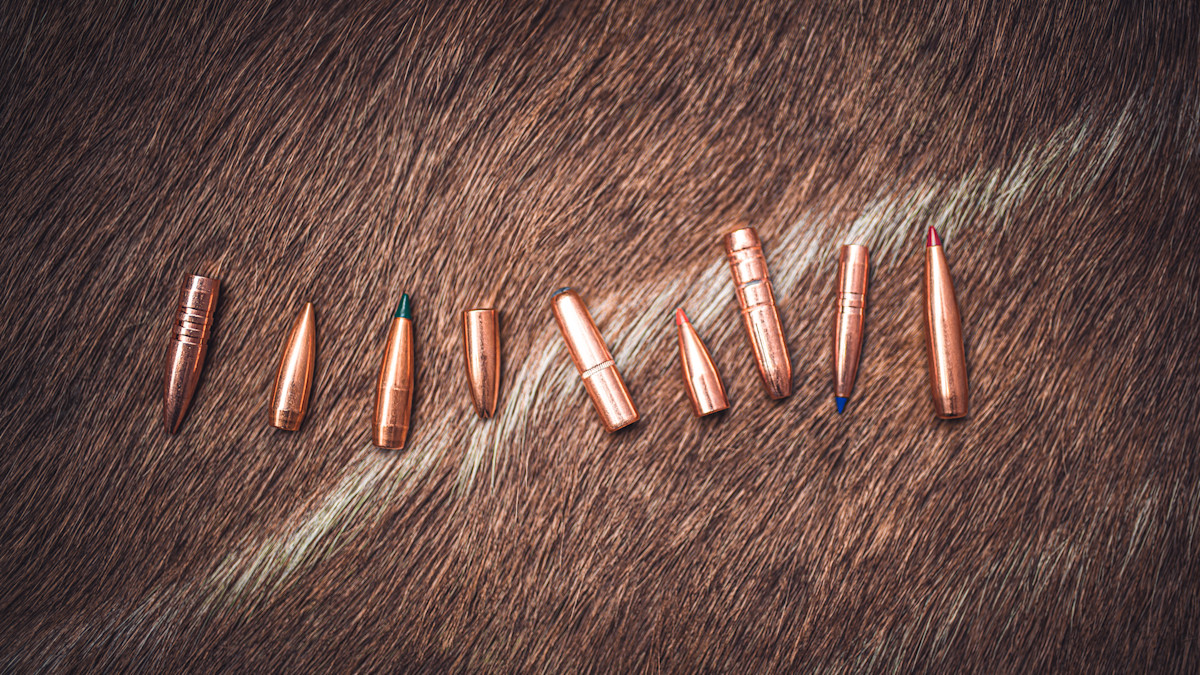
It’s safe to say that hunters are spoiled by bullet selections these days. But the sheer number of options can be overwhelming. What’s the difference between “cup and core” and “soft point?” What does it mean for a bullet to be “bonded,” why do some hunters swear by “partition” bullets, and isn’t “monolithic” the word scientists use to describe Stonehenge?
Many hunters avoid these questions by picking the first box of ammo they find in their price range. A screaming hot piece of lead is going to put a hurt on an animal no matter the bullet design. But as we learned testing three different bullets through bone and into ballistics gel, some projectiles perform better at extended ranges than others. Knowing the ins and outs of the bullet you’re using can help you take a clean, ethical shot.
A Brief History
The first hunting bullets were little more than miniaturized cannon balls. Spheres are the easiest shape to shove down the business end of a muzzleloader, so it wasn’t until self-contained metallic cartridges came along that hunters really started to experiment with what we now know as “bullet-shaped” projectiles.
That’s according to Drew Goodlin, the Senior Director of Engineering for Federal Premium Ammunition. Goodlin told MeatEater that the classic pointed cylinder design didn’t appear until the mid-to-late 19th century.
“That’s the point in time when they started thinking about long bullets that stabilize in flight and increase terminal ballistics,” he said.
Hunters soon found that if you push one of these lead bullets fast enough, it can melt and break apart. So, they started to experiment with gilding metal–what we now know as a “jacket.” Wrapping a lead bullet with a metal jacket allowed hunters to fire bullets faster and keep them together longer.
“We also utilize that jacket to control expansion and give us good terminal effects on whatever we’re hunting,” Goodlin explained.
This “cup-and-core” design is still widely available today. If you see a bullet labeled “jacketed soft point,” it’s likely this traditional type of bullet. These cup-and-core bullets can be effective on a wide range of animals within appropriate distances (more on that below).
In the 1940s, John Nosler came along and took the first step towards a more modern hunting bullet. Goodlin met “old man Nosler” before the legendary bullet designer passed away in 2010.
“He’ll tell you that the cup-and-core bullets they had in the 1940’s were too soft,” Goodlin said. “Thin jacket, made with WWII machinery. They would expand too much and not give him the penetration he was after.”
To solve this problem, Nosler designed the Nosler Partition bullet with a metal web or “partition” that splits the lead core into two segments. This, Goodlin explained, limits bullet expansion to the width of that web and keeps the projectile traveling through the animal.
The next major breakthrough in bullet technology came in the late 1980’s with all-copper or “monolithic” bullets from Barnes Bullets. These bullets remove the lead core entirely, which helps the bullet retain its weight and keeps it from breaking apart. Goodlin added that these bullets can be more easily manufactured for accuracy.
“Monolithic bullets are made out of one part. Typically, a one-part solution is better than two or three when it comes to accuracy. You can turn them on a lathe and get them almost perfect,” he said.
All-copper bullets aren’t actually perfect, of course. They produce higher internal pressures, which is why many are designed with a series of rings engraved on the outside. Hunters have also reported overpenetration and a failure to expand.
“If a monolithic bullet does not ‘upset’ big enough, it can zip right through an elk,” Goodlin said. “Sometimes they don’t even know they’ve been shot. You get through-and-through penetration, but it doesn’t always cause that much terminal effect.”
Usually (but not always) this failure to expand is caused by a lack of terminal velocity. Hunters should be careful to fire from a distance at which the bullet will be traveling fast enough to fully expand when it hits an animal. Federal’s Trophy Copper bullets, for example, should be traveling at least 1,800 feet-per-second.
The final major advancement in this brief history of bullet design came with the bonded bullet. Instead of just wrapping a lead core with a metal jacket, bonded bullets use a chemical or mechanical process to bond the core to the jacket. This keeps the bullet from breaking apart at high velocities, but it also ensures significant and reliable expansion even at lower terminal velocities. In many ways, it’s a best of both worlds between traditional and all-copper bullets.
“You have a combination bullet there. You have a copper shank that arrests the upset much like the partition except the whole shank is copper,” Goodlin said of Federal’s Terminal Ascent bonded bullet. “The front is soft, it expands beautifully. It still has a good upset quality at a lower velocity. And with the lead being bonded to the jacket, they don’t separate.”
Pros and Cons
Now that you know the major landmarks in the history of bullet design, it’s time to pick your poison. I asked Goodlin about the pros and cons of each bullet design, and here’s what he said.
Cup-and-Core
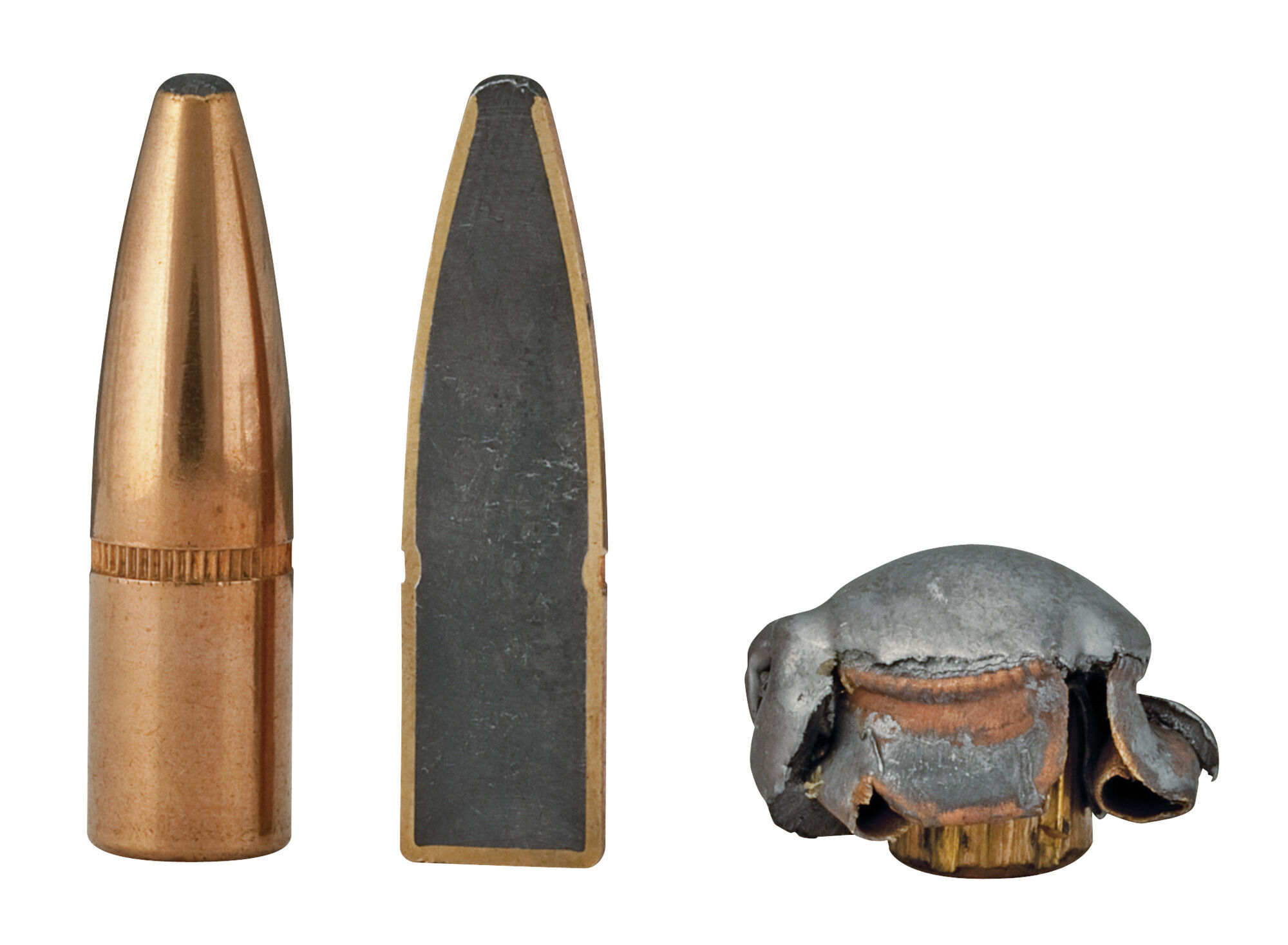
A “cup-and-core” bullet. (Photo: Federal Premium Ammunition)
Pros: Cup-and-core bullets are the least expensive, and they’re effective in most medium-and-large-game hunting scenarios. These bullets are also well known for massive wound channels, even at slower speeds.
Cons: At extreme ranges, these bullets can have a tough time penetrating through bone. They also tend to break apart if they hit an animal at a high velocity, which could cause extensive meat loss. Shot placement is critical, and Drew advised against using cup-and-core in magnum cartridges or fast standard cartridges like the .243 Win., especially if a short-range shot is possible.
Options: Federal Power-Shok, Remington Core-Lokt, Hornady InterLock, Sierra GameKing, Winchester Power Point
Partition
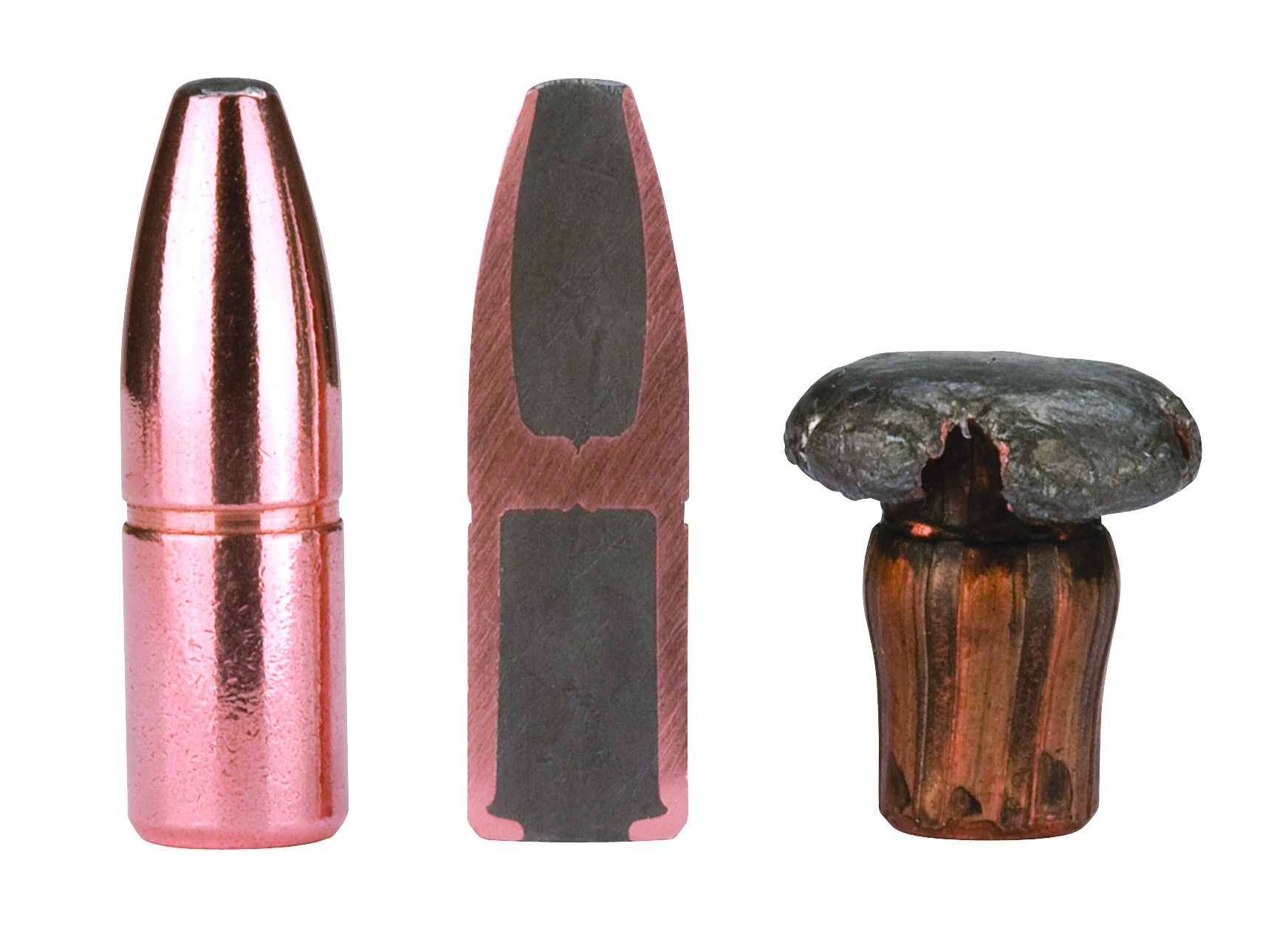
The Swift A-Frame is an updated version of the original partition-style bullet. (Photo: Federal Premium Ammunition)
Pros: The Nosler Partition has remained so popular because it works as advertised: the front lead core expands to maximize energy transfer while the rear lead core remains intact to aid penetration. It can be used at most hunting distances and in standard and magnum cartridges.
Cons: The partition’s disadvantages arise only from its place in history. Bonding would allow more of the jacket to stay intact, and there are more accurate hunting bullets on the market.
Options: Nosler Partition, Swift A-Frame (this bullet is also bonded)
Monolithic
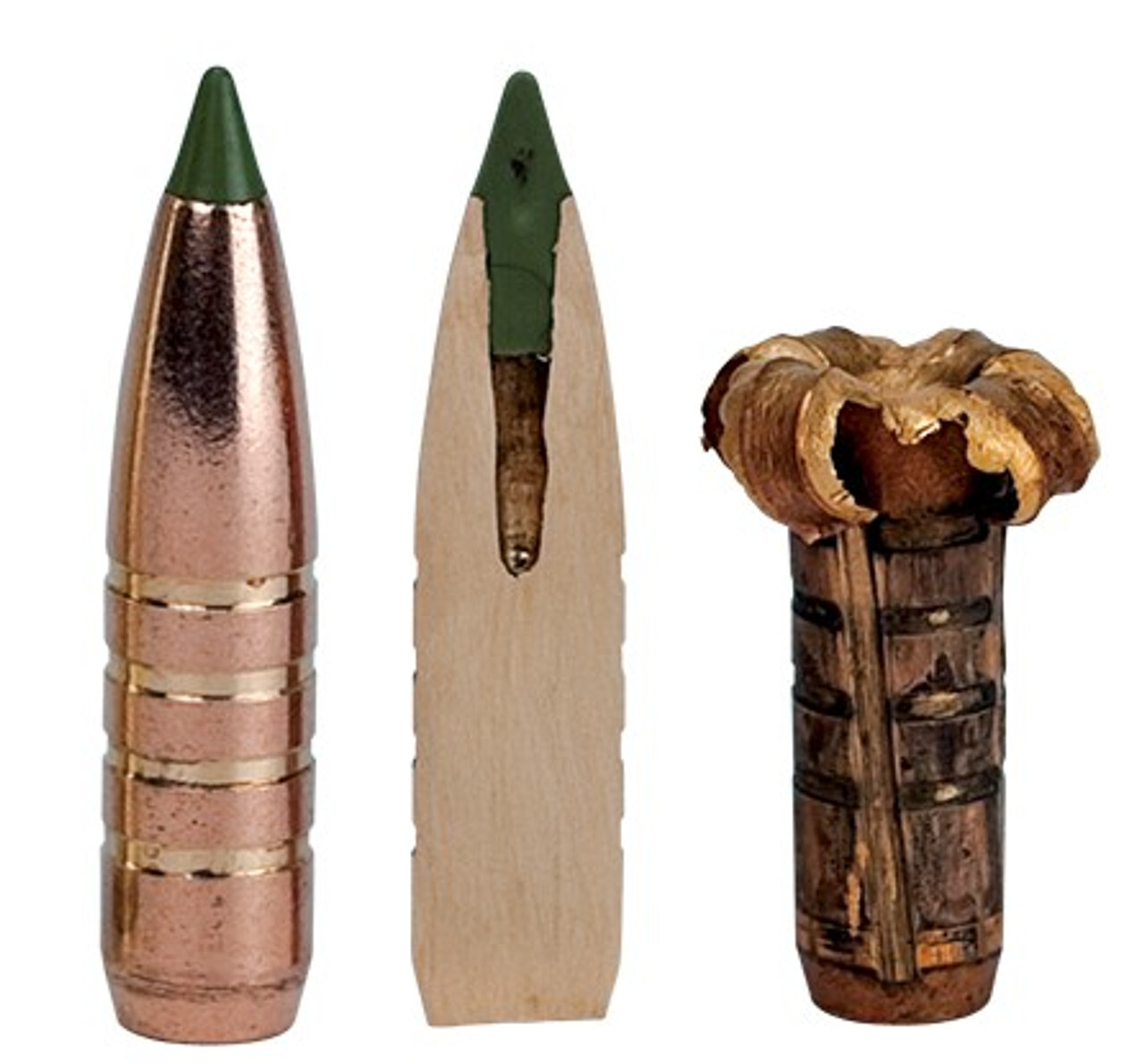
Federal Trophy Copper monolithic bullet. (Photo: Federal Premium Ammunition)
Pros: Monolithic bullets retain their weight better than any other bullet design, which allows for maximum penetration through bone and tissue. Their environmental impact is also minimal since they aren’t leaving lead fragments on the landscape.
Cons: Full expansion can be an issue, especially at longer ranges and lower terminal velocities. If this happens, the bullet can pass through an animal without causing as much internal damage. Monolithic bullets can also cost more than more traditional designs.
Options: Federal Trophy Copper, Barnes TSX, Hornady GMX, Nosler E-Tip
Bonded
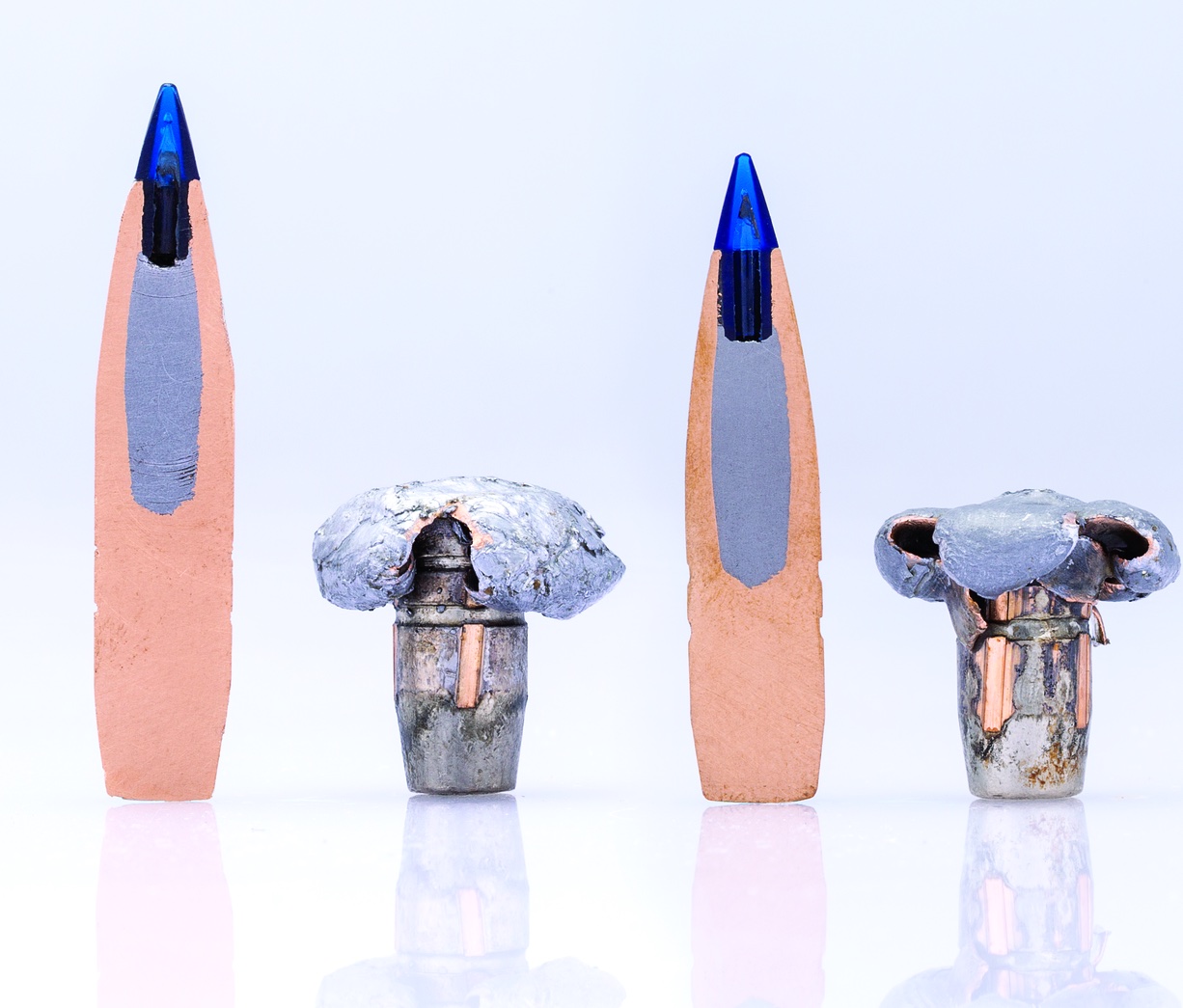
Federal’s Terminal Ascent bonded bullet. (Photo: Federal Premium Ammunition)
Pros: Effective at virtually any reasonable hunting distance, bonded bullets offer the expansion and energy transfer of lead-core bullets combined with the durability of monolithic bullets. They hold together even at high velocities and through bone.
Cons: Cost. You’ll pay a pretty penny for bonded hunting bullets. If you’re hunting whitetail within 200 yards, that cost might not be worth it. Federal’s Fusion bullet is one exception. This bullet uses bonding techniques to keep the “cup and core” married to one another, but it remains one of Federal’s least expensive options.
Options: Federal Terminal Ascent, Nosler AccuBond, Swift A-Frame, Hornady InterBond, Federal Fusion
Last Shot
Seasoned hunters will notice that this list is not comprehensive. Ammo makers offer a wide variety of additional options that adjust jacket thickness and lead hardness, and there’s always some boutique bullet maker in Wyoming making a super-primo-expanding-fragmenting-TNT bullet for varmints. But knowing the difference between cup-and-core, partition, monolithic, and bonded should help you make an informed decision next time you’re staring at a wall of rifle ammunition.
Goodlin offered two final pieces of advice. First, be sure to test whatever ammo you select in your hunting rifle. Second, don’t let indecision about ammunition keep you from the field.
“If all you have is a box of Remington Core-Lokt, and you get a chance to go elk hunting, go elk hunting,” he said. “But if you have a chance to think through the best bullet…the last thing you want to go cheap on is your ammo because that’s what does all the work.”
Feature image via Holt Works Photo.






